Molly, the street name for MDMA (3,4-Methylenedioxymethamphetamine), has gained significant popularity in party scenes and music festivals. This synthetic drug alters mood and perception, creating intense feelings of pleasure and emotional warmth.
Known by various names including “M,” “Mandy,” and “X,” Molly appears as crystalline powder or pressed tablets. The drug’s chemical structure combines stimulant and hallucinogenic properties, affecting brain neurotransmitters – particularly serotonin.
Users experience heightened energy, emotional connection, and sensory perception. These effects come with substantial risks:
- Physical dangers: Dehydration, hyperthermia, heart problems
- Mental health impacts: Depression, anxiety, memory issues
- Long-term complications: Cognitive decline, organ damage
Professional detox options exist for individuals struggling with Molly addiction. Treatment approaches include:
- Medical supervision during withdrawal
- Behavioral therapy
- Support group participation
- Holistic healing methods
Understanding Molly’s effects and risks helps individuals make informed decisions about their health and seek appropriate treatment when needed.
What is Molly?
Molly, scientifically known as MDMA (3,4-methylenedioxymethamphetamine), is a synthetic drug that alters mood and perception. This psychoactive substance belongs to both the stimulant and hallucinogen drug classes, creating unique effects on the brain’s chemistry.
Pure MDMA comes in crystal or powder form, typically contained in capsules. The drug works by triggering a surge of neurotransmitters – serotonin, dopamine, and norepinephrine – creating intense feelings of euphoria and emotional connection.
Many users believe Molly is a “pure” form of MDMA, distinguishing it from Ecstasy tablets. This perception is often misleading, as street Molly frequently contains:
- Synthetic cathinones (“bath salts”)
- Methamphetamine
- Caffeine
- Cocaine
- Ketamine
- Other harmful substances
Laboratory testing reveals that many Molly samples contain little to no actual MDMA, making it impossible for users to know exactly what substances they’re consuming. This uncertainty significantly increases the risks associated with use.
Effects of Molly Drug
The effects of Molly typically begin within 30-45 minutes after consumption and can last 3-6 hours. Users experience a range of physical and psychological changes:
Psychological Effects:
- Intense feelings of euphoria and well-being
- Heightened sensory perception
- Increased sociability and emotional openness
- Altered sense of time
- Enhanced music appreciation
- Reduced anxiety and stress
Physical Effects:
- Dilated pupils
- Jaw clenching (bruxism)
- Muscle tension or cramping
- Increased heart rate
- Elevated body temperature (hyperthermia)
- Excessive sweating
- Dehydration
- Decreased appetite
Short-term Side Effects:
- Nausea and dizziness
- Blurred vision
- Sleep problems
- Dry mouth
- Heavy breathing
- Restless legs
- Involuntary teeth grinding
The intensity of these effects varies based on factors like dosage, individual tolerance, and environment. Dancing in hot, crowded spaces can intensify physical symptoms, particularly hyperthermia and dehydration. Users often report a “peak” experience about 90 minutes after ingestion, followed by a gradual decline in effects.
Risks Associated with Molly Use
Using Molly carries severe health risks that can be life-threatening.
Serotonin Syndrome: A Dangerous Complication
Serotonin syndrome ranks among the most dangerous complications, occurring when excessive serotonin builds up in your body. This condition presents through:
- Rapid heart rate
- High blood pressure
- Muscle rigidity
- Seizures
- High fever
Overdose Risks: Mixing Substances
The risk of overdose increases significantly when Molly is mixed with other substances. Common overdose symptoms include:
- Panic attacks
- Faintness
- Seizures
- Loss of consciousness
- Hyperthermia
Addiction Signs: Psychological and Physical Dependence
Long-term use leads to psychological and physical dependence. Signs of addiction manifest through:
- Increased tolerance requiring higher doses
- Strong cravings
- Difficulty controlling use
- Continued use despite negative consequences
- Social isolation
- Financial problems
Neurotoxic Effects: Permanent Brain Damage
The drug’s neurotoxic effects can cause permanent brain damage, affecting memory and cognitive function. Regular users often experience:
- Depression
- Anxiety
- Sleep problems
- Concentration difficulties
Street Molly Risks: Unpredictable Adulterants
The unpredictable nature of street Molly adds another layer of risk. Many samples contain dangerous adulterants like methamphetamine, cocaine, or synthetic cathinones, making each use potentially deadly.
Withdrawal Symptoms from MDMA
Stopping or reducing MDMA use triggers a range of physical and psychological withdrawal symptoms. These symptoms typically emerge within 12-24 hours after the last use and can persist for several weeks.
Common MDMA withdrawal symptoms include:
Physical Symptoms
- Muscle tension and aches
- Fatigue and exhaustion
- Changes in appetite
- Sleep disturbances
- Chills and sweating
Psychological Symptoms
- Depression and anxiety
- Memory problems
- Difficulty concentrating
- Intense drug cravings
- Mood swings
The severity of withdrawal symptoms varies based on factors like frequency of use, dosage amounts, and individual health conditions. Users often report feeling “emotionally flat” or experiencing “brain zaps” – sudden electric shock sensations in the head. These symptoms can be particularly challenging due to MDMA’s impact on the brain’s serotonin system, leading many users to seek professional help for safe withdrawal management. It’s worth noting that the emotional flatness experienced may resemble some effects seen in withdrawal from antidepressants, which also influence serotonin levels.
Detox Options for Molly Addiction
Professional addiction treatment programs offer structured approaches to overcome Molly dependency through medical detoxification and therapeutic interventions. The detox process typically occurs in specialized facilities under medical supervision to manage withdrawal symptoms safely.
Medical Detoxification Components:
- 24/7 medical monitoring
- Medication management for symptom relief
- Vital signs tracking
- Nutritional support
- Hydration maintenance
Behavioral therapy stands as a crucial element in Molly addiction treatment. These therapeutic approaches help identify triggers, develop coping mechanisms, and address underlying mental health concerns:
- Cognitive Behavioral Therapy (CBT)
- Dialectical Behavior Therapy (DBT)
- Group therapy sessions
- Individual counseling
- Family therapy programs
If you’re searching for detox options near you, such queries connect you with local treatment facilities offering specialized care. Professional treatment centers provide:
- Personalized treatment plans
- Dual diagnosis treatment
- Relapse prevention strategies
- Aftercare planning
- Support group connections
The combination of medical detoxification and therapeutic interventions creates a comprehensive treatment approach. Medical professionals assess each patient’s needs to develop individualized treatment strategies, considering factors like usage history, co-occurring disorders, and personal circumstances. For those seeking specific addiction therapies in areas such as Orange County, CA, facilities like SoCal Detox offer evidence-based, personalized treatment for lasting recovery.
SoCal Detox’s Approach to Molly Addiction Treatment
Located in the serene surroundings of Laguna Beach, SoCal Detox offers a unique healing experience for those seeking treatment for Molly addiction. The facility’s therapeutic environment, characterized by ocean breezes and stunning coastal views, creates an ideal setting for recovery.
Our Comprehensive Treatment Programs Include:
- Personalized Care Plans: Each client receives a tailored treatment strategy addressing their specific needs, which may include our specialized detox services.
- Holistic Healing Methods: We integrate meditation, yoga, and mindfulness practices into our treatment.
- Nature-Based Therapy: Clients engage in beach walks and outdoor activities that support physical and mental recovery.
- Group Support Sessions: We facilitate building connections with others on similar recovery journeys.
- Professional Medical Staff: Our team provides 24/7 supervision and support throughout the detox process.
The tranquil coastal setting significantly helps reduce stress and anxiety that are common during Molly withdrawal. Our facility features peaceful gardens, comfortable living spaces, and private areas for reflection. The design promotes both physical healing and emotional well-being, which are essential components for successful recovery from MDMA addiction.
At SoCal Detox, we combine evidence-based treatments with alternative therapies in a luxurious beachside setting. This approach provides comprehensive care that addresses both the physical and psychological aspects of addiction. If you’re ready to start your recovery journey, don’t hesitate to contact us for personalized addiction treatment support.
Conclusion
Breaking free from Molly addiction requires professional guidance and support. SoCal Detox stands ready to help you reclaim your life through personalized treatment programs designed for your specific needs.
Your journey to recovery starts with a single step. Our experienced team at SoCal Detox provides the tools, support, and serene environment essential for lasting recovery. We offer various addiction treatments tailored to meet individual needs. Don’t let Molly control your future – reach out today.
Take Action Now:
- Call us 24/7 at (888) 590-0777
- Visit our website
- Schedule a confidential consultation
- Learn about our flexible payment options
Your path to healing awaits at our Laguna Beach facility. Let SoCal Detox guide you toward a healthier, drug-free life.

